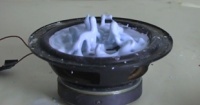Retained
-
Member Title
BentMike
-
I knew that part, only one at a time in Win. Om, bodhi svaha. No kings in this realm, all are interdependent.
-
Thanks Allan (my dad spells it that way, even got saddled with the Edgar part too). I probably do have a restore point, I also have a home server with numerous images I could return to. I really wanted to strip this machine down for browsing and music and not much more. Since gutting it by Add/Remove programs didn't work, formating might be the next best thing. My main question is how does the audio fit with the OS? What are all the ingredients that make it work? In trying to get this going, I realized I don't how it all fits together. I don't mind trouble shooting from this point, because I will learn something. I may restore, then if I am more careful I may learn how I messed it up. I caused this by pretty much installing every piece of free software I came across for a year. Some of it very nice, but a lot of trashy stuff for audio. I have had lots of irritation with USB audio. Headsets, microphones, and this Musiland gizmo. All sort of ornery.
-
I could sure use some advice. (Please let me know if one of the other forums is a better place to post this.) Here is the problem and some background: I have cleaned up too much stuff and now my internal and external sound cards do not get recognized by whatever system needs to. I do know that both cards work. The internal card is a Real Audio system - if I call up the little GUI that makes sounds move around, and I plug the line out into an amp I get sound. The external card is a Musiland Monitor 01 USD with a little HT DAC; it is functional on other systems (though a little weird when I switch back and forth with the internal card). I have another XP machine at work that is fine with the Musiland, and a Win7 that is OK. The Sound and Audio Device Properties window never shows any hardware. The Device Manager shows the Real Audio as either enabled or disabled, and when I plug and unplug the Musiland from USB I see its drivers there as well. The Musiland USB CPL daemon is running as a service. I realize that I don't know what all the ingredients of a functioning audio system is for a PC. Does anyone have a good reference I could get a look at? (Teach me to fish, please. Don't just feed me.) I am about to resort to a format of the HD and reinstall of the OS. It will take a while to get it back to where I like, but I may have already spent as much time doodling around not knowing what to do. Thanks for the help ahead of time. BentMike
-
We've Made Improvements to Cloud PlayerWhen you sign into the updated Cloud Player, we'll upgrade your music to high-quality 256 Kbps audio at no additional charge. They converted the files I had in the cloud that were upgradable. It worked, very easy. The tracks sounded better, but there were only a small number. BM
-
Thanks Bob, good link. I found this in it: Cabling details S/PDIF (IEC-958) uses 75 ohm coaxial cable and RCA connectors. 75 ohm coaxial cable is inexpensive, because it is the same cable as used in video transmission (you can buy a video cable with RCA connectors to connect your S/PDIF equipment together). Coaxial S/PDIF connections work typically at least to 10-15 meter distances with good 75 ohm coaxial cable. Pretty clearly advocating the 75ohm cable. A little later: The output impedance is standard 75 ohm, so ordinary coaxial cable designed for video applications can be used. The minimal input level of S/PDIF interface is 200 mVtt which allows some cable losses. There is no real need for special quality cable as long as the cable is made of 75 ohm coaxial cable (a good video accessory cable works also as good S/PDIF cable). Read more at: epanorama.net/S/PDIF Interface I never heard of "velocity factor" before. Can you explain that?
-
I should have linked this earlier (also from the Wiki on S/PDIF) It is a paper on interfacing AES3 and S/PDIF. http://www.nu9n.com/images/AES3-SPDIF-notes.pdf There are some schematics of how the various cables should be set up. It isn't clear if there is anything to be done between S/PDIF and S/PDIF. Thanks for the comments, BentMike
-
I just read a bunch of stuff about S/PDIF to take-your-pick needs a 75Ohm Coax interconnect. I can't find anything about how an S/PDIF to S/PDIF connection should be made. Between my external sound card S/PDIF output and my DAC S/PDIF input I have been using a garden variety RCA jacked Coax cable. It does work, but are there ramifications? Should I get a 75 Ohm cable post haste? Thanks, BentMike


